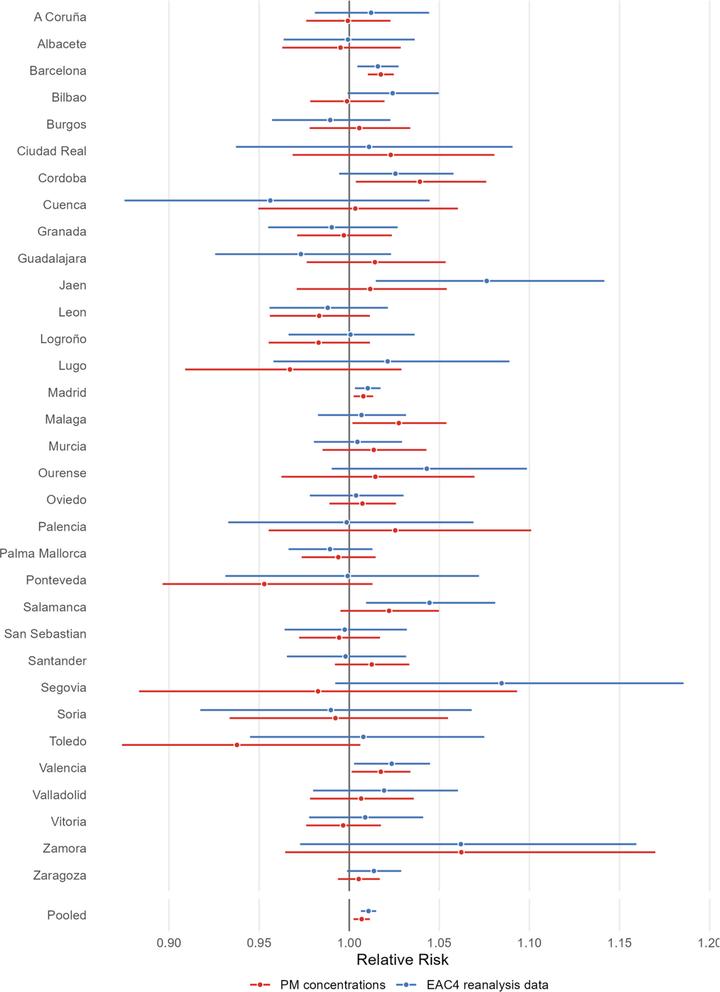Comparison of Air Pollution–Mortality Associations Using Observed Particulate Matter Concentrations and Reanalysis Data in 33 Spanish Cities

Abstract
Air pollution poses a health hazard in all countries. However, complete data on ambient particulate matter (PM) concentrations are not available in all world regions. Reanalysis data is already a valuable source of exposure data in epidemiological studies examining the relationship between temperature and health. Nevertheless, the performance of reanalysis data in assessing the short-term health effects of particulate air pollution remains unclear. We assessed the performance of CAMS reanalysis (EAC4) data from the European Centre for Medium-Range Weather Forecasts, compared with daily PM concentrations from field monitoring stations, to estimate short-term exposure to PM with an aerodynamic diameter less than 10 μm (PM10) on daily mortality in 33 Spanish provincial capital cities using a two-stage time series regression design. The shape of the PM10 distribution varied substantially between PM observations and CAMS global reanalysis of atmospheric composition (EAC4) reanalysis data, with correlation ranging from 0.21 to 0.58. The pooled mortality risk for a 10 μg/m3 increase in PM10 showed similar estimates using PM concentrations {relative risks (RR) = 1.007, 95% confidence intervals (95% CI) = [1.002, 1.011]} and EAC4 reanalysis data (RR = 1.011, 95% CI = [1.006, 1.015]). However, the city-specific PM10 beta coefficients estimated using PM concentrations and EAC4 reanalysis data showed a low correlation (r = 0.22). The use of reanalysis data should be approached with caution when assessing the association between particulate matter air pollution and health outcomes, particularly in cities with small populations.